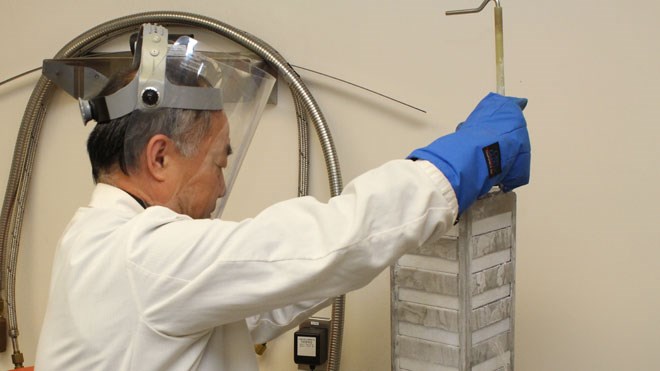A research team at Health Sciences North has developed a method that could see breast cancer treatments tailored to the particular genetic makeup of the patient.
The research is being called a potential breakthrough in chemotherapy because it allows physicians to see early on if a therapy will be effective for an individual, preserving valuable treatment time.
“If you can identify (patients) fairly early in therapy, they usually have a lot less toxicity to the chemotherapy drugs,” said Dr. Amadeo Parissenti, an affiliate scientist with the Advanced Medical Research Institute of Canada at Health Sciences North.
Dr. Roger Strasser, dean of the Northern Ontario School of Medicine, pulled no punches — he called the research a "breakthrough."
“I extend my sincere congratulations to Dr. Parissenti and his team for this important breakthrough,” Strasser said.
Toronto-based Rna Diagnostics, with which Parissenti is the chief scientific officer, will handle the commercialization of the analysis so the service can be offered to hospitals around the world.
“This will have profound implications for their care and ability to beat cancer,” said Dr. Kenneth Pritzker, CEO of Rna Diagnostics, in a release.
Parissenti, who is also a professor of chemistry and biochemistry at Laurentian University, and a professor of medical sciences at the Northern Ontario School of Medicine, developed the RNA Disruption Assay test, in collaboration with Dr. Baoqing Guo and his colleagues at Health Sciences North, to pre-screen breast cancer patients for proper treatment.
RNA stands for ribonucleic acid, large biological molecules that perform vital roles for the coding, decoding and regulation of genes.
“RNA is really the active component of genes,” Parissenti said. “You can tell a lot about whether a gene is active or not based on whether there is RNA present for that particular gene.”
Parissenti and his team analyzed breast cancer tumour tissue samples, and discovered there is a correlation between the amount of RNA degradation and complete tumour destruction after treatment.
In other words, if a tissue sample had high-quality RNA after several rounds of chemotherapy, it meant the treatment was not very effective.
But a tissue sample with degraded, or disrupted RNA, after those same rounds of chemotherapy, meant the patient would be a good candidate to continue the therapy, since the tumour was being destroyed.
Those patients with high quality RNA could forgo the toxic side effects of continuing chemotherapy, and opt for surgery, radiation therapy, or other treatments instead.
A breast cancer patient will typically do six to eight rounds of chemotherapy to destroy the tumour. The Sudbury researchers have so far been able to conduct their RNA Disruption Assay test mid-treatment – at the third or fourth round of chemotherapy.
Parissenti said the hope is to eventually be able to conduct the test at the early stages of chemotherapy, so doctors can best respond to their patients' needs and choose the treatment that will work best for them.
Parissenti said the test could be conducted on other types of cancer, but they have started research with breast cancer because live tissue samples are more easily obtainable than with some other cancers.
His research also concluded that patients with a high tumour RNA disruption score lived about two to three-and-a-half years longer cancer-free than patients with a high-quality RNA, following the completion of chemotherapy.
The next phase of the research is to automate the analysis of the RNA in cancer cells, and commercialize the service.
Join Sudbury.com+
- Messages
- Post a Listing
- Your Listings
- Your Profile
- Your Subscriptions
- Your Likes
- Your Business
- Support Local News
- Payment History
Sudbury.com+ members
Already a +member?
Not a +member?
Sign up for a Sudbury.com+ account for instant access to upcoming contests, local offers, auctions and so much more.
